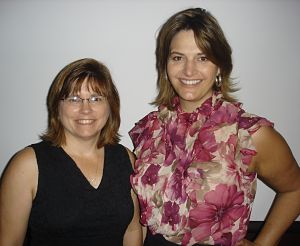 Last Friday, my friend Sandy Rees of Get Fully Funded released her new book, “Get Fully Funded: How to Raise the Money of your Dreams.” Sandy always has practical ideas, so I interviewed her on the topic of where to get volunteers for your benefit auction.
Last Friday, my friend Sandy Rees of Get Fully Funded released her new book, “Get Fully Funded: How to Raise the Money of your Dreams.” Sandy always has practical ideas, so I interviewed her on the topic of where to get volunteers for your benefit auction.
Sherry: Benefit auctions rely on volunteers. What advice might you have for my readers?
Sandy: There are three steps I like to address.
First, be clear about what you need. As a fundraiser, you’ll soon realize that you need to clone yourself because you simply can’t do it all. How do you clone yourself? You get volunteers.
People will help, but they need to understand what you’re asking them to do. Start getting clear about what you’re doing and even your process because you’ll be teaching that to others. You’ll be explaining to people what they would need to do.
Second, recruit the right people. You can’t assume that just because someone is involved in nonprofit she knows how to do something.
For example, at your auction, you can’t assume that someone just “knows” how to greet a guest at registration and grasps the underlying process of check-in. Or you might have a good-hearted person helping your nonprofit, but they come across wrong. Maybe you shouldn’t ask that person to go out and ask for donations. Think about the personality of the person. Is it a good fit? Will it work?
Sherry: Yes, I see a number of auction committees recruit inappropriate people for raffle ticket sales, for instance. Nice people, but not really sales people. What’s the third step, Sandy?
Sandy: You need to set them up for success. Give them everything they need to do the job, and I mean everything: materials … training … structure. Whatever it looks like, set them up for success.
Sherry: Here’s another common question. Where would you suggest auction planners find volunteers?
Sandy: Just start asking around. Does the Board know anyone who would want to play? Instead of asking people to work or volunteer, ask them to come “play.” I do everything I can to make it fun. I want them to have a win, because when they have a good experience, they will come back again.
Where are volunteers? They are all over. Keep your eyes open. Spread the word.
I’ve used the organization’s newsletter, its website, social media, and simply asking current staff if they know someone. Even as I’m out networking in the community, I ask people if they’d like to come and play. I once used VolunteerMatch.com, and even that worked. I was really surprised because I thought it might only work in the cities, but it worked in my rural area.
Here’s another tip: Think about those volunteers who seem to be the most successful, create a profile of them, and then go find people just like them. For instance, your profile for staffing an event is different than your profile for someone working in an office.
I once created “repetitive volunteers.” At one of my jobs, I oversaw a telethon. I needed 6-8 people to answer the phone live on TV. They needed to look upbeat, sound pleasant, answer questions, and accurately record information. I didn’t have to recruit beyond the second year because my first year volunteers worked so well and enjoyed it so much, they returned.
Sherry: Those are some good tips. I especially like the idea of “playing” versus volunteering. It softens the edge. Here’s another question I frequently hear. How do you get your Board to help with the auction?
Sandy: You can’t make the Board do anything. If they haven’t bought in, they haven’t bought in. If they aren’t interested in helping with your event … if they aren’t interested in bringing people to it or helping with procurement … then you’ve got a bigger problem than just that auction.
Sherry: Exactly! And that’s when I tell my nonprofits to call you because they need more help than I can give them. Now tell me about your new book, Get Fully Funded: How to Raise the Money of your Dreams?
Sandy: I include many “how to” activities in the book – how to write a grant, how to raise money – but there’s also a good portion on mindset, like making fundraising a priority. To make it as easy as possible to implement, I’ve included 101 checklists and templates. It’s one thing to give someone the information they need to run a program; it’s totally different to get them to implement it. So the checklists help with, “Here’s the first step, and the next step, and the next.”
Sherry: So is the book targeted towards Development Directors?
Sandy: Development Directors of nonprofits, or Executive Directors responsible for fundraising. It teaches my fundraising system.
Sherry: I’m already enjoying the first chapter, Sandy. And thank you for your tips on benefit auction volunteers today. (Reader: If you want information on the book, click here.)
Sandy: My pleasure!
Sherry, what a coup landing Sandy for an interview! I love her plain-spoken advice. Great idea too for volunteer recruitment – play up “fun” because galas and auctions are fun! Thanks for the guidance. 🙂